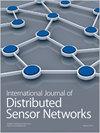A certificateless aggregate signature scheme for security and privacy protection in VANET
IF 2.5
4区 计算机科学
Q3 COMPUTER SCIENCE, INFORMATION SYSTEMS
International Journal of Distributed Sensor Networks
Pub Date : 2022-05-01
DOI:10.1177/15501329221080658
引用次数: 9
Abstract
In the vehicular ad hoc network, moving vehicles can keep communicating with each other by entering or leaving the network at any time to establish a new connection. However, since many users transmit a substantial number of messages, it may cause reception delays and affect the entire system. A certificateless aggregate signature scheme can provide a signature compression that keeps the verification cost low. Therefore, it is beneficial for environments constrained by time, bandwidth, and storage, such as vehicular ad hoc network. In recent years, several certificateless aggregate signature schemes have been proposed. Unfortunately, some of them still have some security and privacy issues under specific existing attacks. This article offers an authentication scheme that can improve security, privacy, and efficiency. First, we apply the certificateless aggregate signature method to prevent the onboard unit devices from leaking sensitive information when sending messages. The scheme is proven to be secure against the Type-1 ( A 1 ) and Type-2 ( A 2 ) adversaries in the random oracle model under the computational Diffie–Hellman problem assumption. Then, the performance evaluation demonstrates that our proposed scheme is more suitable for deployment in vehicular ad hoc network environments.VANET中用于安全和隐私保护的无证书聚合签名方案
在车辆自组织网络中,移动车辆可以通过随时进入或离开网络来保持相互通信,以建立新的连接。然而,由于许多用户发送大量消息,这可能会导致接收延迟并影响整个系统。无证书聚合签名方案可以提供一种签名压缩,使验证成本保持在较低水平。因此,它有利于受时间、带宽和存储限制的环境,如车载自组织网络。近年来,人们提出了几种无证书聚合签名方案。不幸的是,在特定的现有攻击下,其中一些仍然存在一些安全和隐私问题。本文提供了一种可以提高安全性、隐私性和效率的身份验证方案。首先,我们应用无证书聚合签名方法来防止车载单元设备在发送消息时泄露敏感信息。在计算Diffie-Hellman问题的假设下,该方案被证明对随机预言机模型中的1型(A1)和2型(A2)对手是安全的。然后,性能评估表明,我们提出的方案更适合部署在车载自组织网络环境中。
本文章由计算机程序翻译,如有差异,请以英文原文为准。
求助全文
约1分钟内获得全文
求助全文
来源期刊
CiteScore
6.50
自引率
4.30%
发文量
94
审稿时长
3.6 months
期刊介绍:
International Journal of Distributed Sensor Networks (IJDSN) is a JCR ranked, peer-reviewed, open access journal that focuses on applied research and applications of sensor networks. The goal of this journal is to provide a forum for the publication of important research contributions in developing high performance computing solutions to problems arising from the complexities of these sensor network systems. Articles highlight advances in uses of sensor network systems for solving computational tasks in manufacturing, engineering and environmental systems.

 求助内容:
求助内容: 应助结果提醒方式:
应助结果提醒方式:


